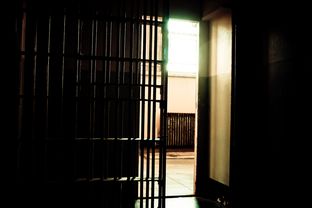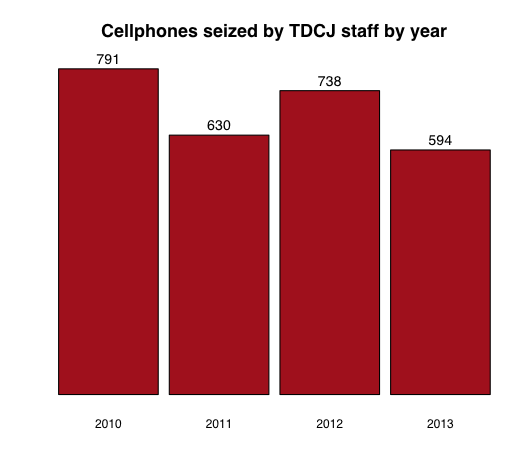Updated, Tuesday, April 22, at 3:29 p.m.:
Prison officials and advocacy groups told lawmakers on Tuesday that when it comes to ensuring that inmates with substance abuse and mental illness issues don’t commit more crimes, they should focus on providing services outside of prisons.
Brad Livingston, executive director of the Texas Department of Criminal Justice, said those issues, some of the most troubling for the criminal justice system, precede the inmates' incarceration. For instance, if drug abusers commit crimes while on a drug binge, they will be admitted into local jails often without medical attention or an adequate mental health assessment.
“From the big picture standpoint, some of the challenges are more significant upstream, in the jail and pretrial setting,” Livingston said.
Of the more than 150,000 inmates currently incarcerated in the 109 Texas facilities, about 25,000 are diagnosed with a mental illness, and 62 percent have chemical dependency issues. In 2012 and 2013, TDCJ expenditures on offender mental health services totaled $60 million, while substance abuse treatment spending was about $172 million.
“We still have a lot of work to do,” Livingston said. “But I believe we have a blueprint for targeting mental health issues and resources, as well as for substance abuse.”
Livingston urged lawmakers to continue investment in the Texas Correctional Office on Offenders with Mental or Medical Impairments, a program within the department of criminal justice that provides additional treatment for offenders on probation and parole.
Advocates agreed with Livingston that mental health and substance abuse issues should be identified and treated prior to incarceration and after inmates are released.
“Forty percent of people booked into Texas county jails have already touched the public mental health system,” said Lynda Frost, the director of the Hogg Foundation for Mental Health. “It’s a tremendous opportunity to address the underlying illnesses and to reduce the burden on the criminal justice system.”
Original story:
Two House committees on Tuesday will consider one of the hardest groups of prisoners to rehabilitate: inmates with mental illness who also have substance abuse problems.
Overall, Texas inmate recidivism is down by 5 percent since 2005. The most recent numbers, from 2009, show that about 22 percent of prison inmates who came back to prison had been released within the previous three years. But there are no clear statistics on how many among the dual-diagnosed reoffend, because recidivism statistics kept by the Texas Legislative Budget Board are based on the type of the facility, not the type of inmate.
No matter the rate, though, recidivism in any form is costly to the state, said Tony Fabelo, director of research for the Justice Center at the Council of State Governments, a policy research organization. That’s why it pays to look at any group whose recidivism could be reduced with better treatment.
“One population to clearly target is the dual-diagnosed, because they are more likely to reoffend,” Fabelo said.
At more than $50 a day per inmate, the overall number of inmates who returned to prison – more than 9,000 according to the budget board, in 2009 — can cost more than $165 million a year, Fabelo said.
Any way to reduce the number of returning inmates is a savings, both to society as a whole and to the taxpayers, he said.
A study in 2010 by researchers at the University of Texas Medical Branch in Galveston that examined a sample of Texas parolees with a dual diagnosis of a major psychiatric disorder and a substance abuse disorder found that the group had a “substantially increased risk of having their parole revoked” because of either a technical violation or the commission of a new criminal offense.
The Texas correctional system has poured millions into mental health programs and substance abuse treatment for offenders in an attempt to keep inmates from re-offending and returning to prison.
“We are dialed into the issue of re-entry and rehabilitation,” said Jason Clark, spokesman for the Texas Department of Criminal Justice.
But the scope of just how many inmates with substance abuse problems and mental illness reoffend is unclear.
TDCJ tracks only the number of inmates with substance abuse problems who served time in a state Substance Abuse Felony Punishment Facility, which officials call a SAFE-P facility. In 2009, the number of parolees from those facilities who reoffended within three years fell only 1 percent from 2005.
The prison system does not track inmates with mental illness, or the dually diagnosed. If better tracking and services were available from the time the inmate arrived to serve his or her sentence, it could help rehabilitate this hard-to-reach group, Fabelo said.
“You want to concentrate your more expansive resources on the population who is higher risk and higher need,” he said.
Disclosure: The University of Texas Medical Branch in Galveston was a corporate sponsor of The Texas Tribune in 2012. (You can also review the full list of Tribune donors and sponsors below $1,000.)























